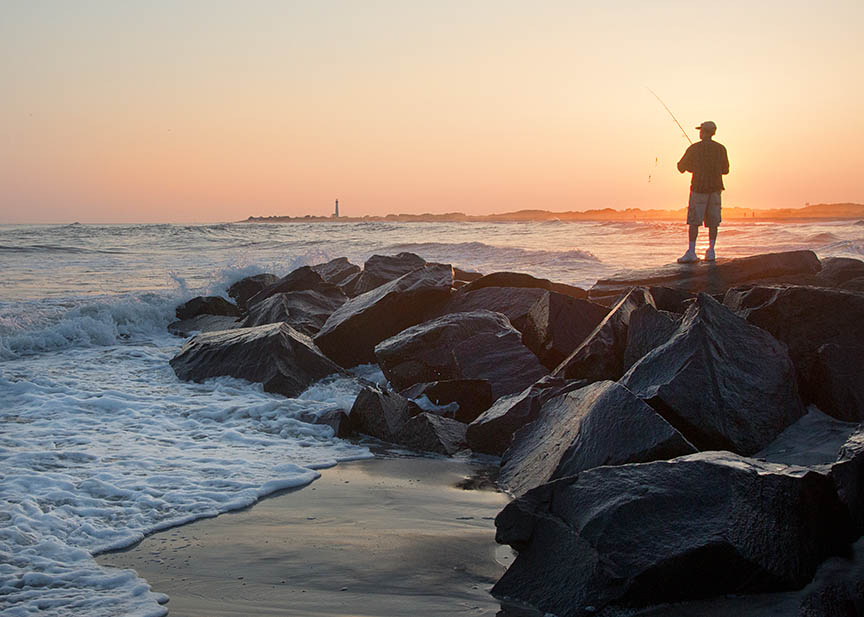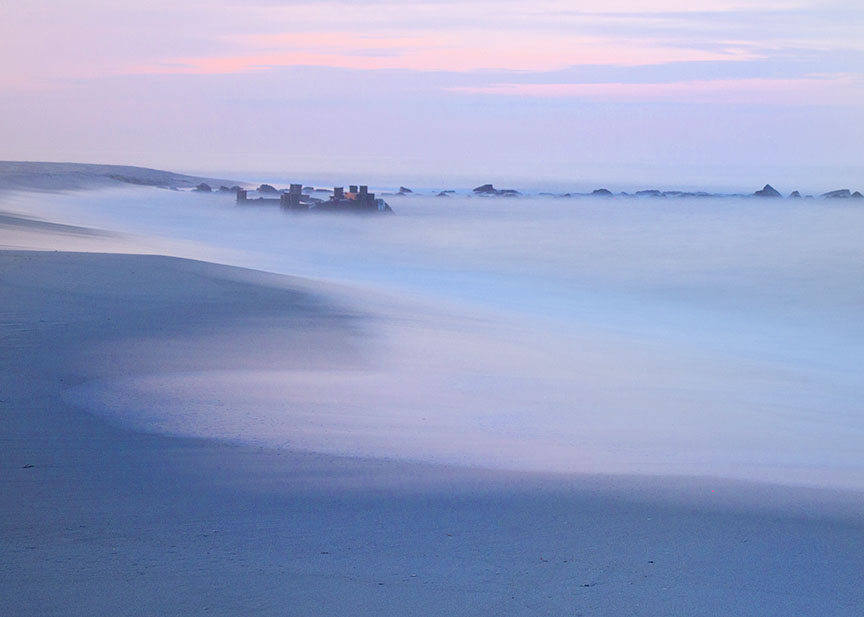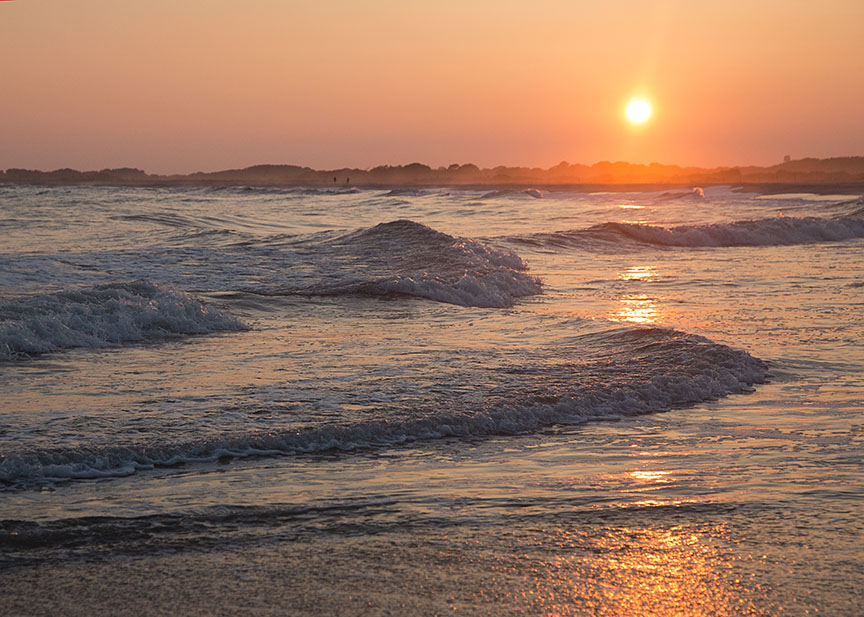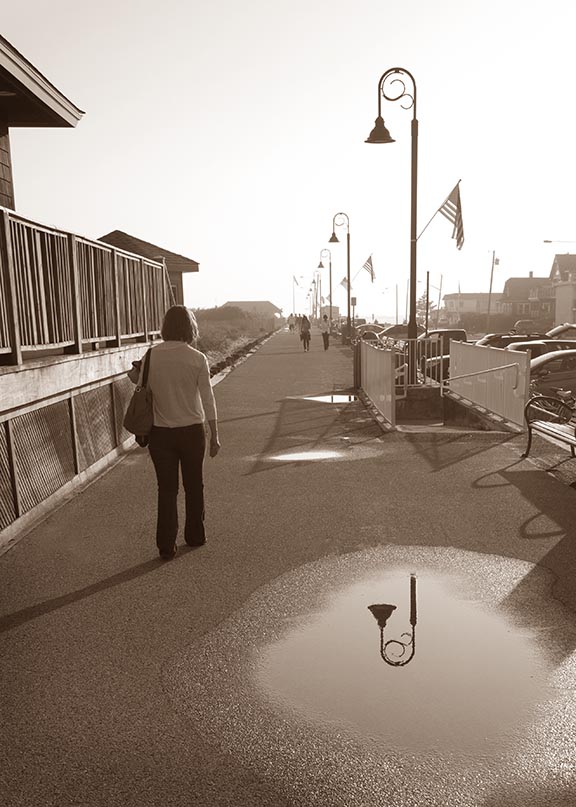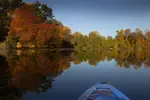Cape May Beach Photos
WRITTEN BY: BRUCE LOVELACE
UPDATED ON: March 28, 2025
It's one of those New Jersey iconic hot spots to visit. Cape May is a photographer's paradise. This post explores Cape May beach photography.
You'll get valuable ideas with helpful examples.
how to take great beach photos in cape may nj
Of course it's much easier to get a great photo of something as beautiful as the Cape May beaches, but there are a few things you can do that will help you get the best results.
1. TIMING
The most popular times to take photos at any beach are usual during sunsets and sunrises. Not only are the skies more interesting to look at, but you also get great reflections in the ocean water to include in your composition.
Additionally, the "Golden Hour" is the time before sunrise and after sunset when the light is soft and you get a flattering rendition of your subject.
2. Shutter Speed
There are usually two special effects that are desirable when it comes to photographing waves on the beach with respect to how fast of a shutter speed you use. You want to use fast shutter speeds to "freeze" the waves or try long slow shutter speeds
Look at the photo below. I used a shutter speed of 30 second, along with a sturdy tripod and a neutral density filter to diminish the amount of light reaching the camera's sensor.
Realize that if it's too bright to get a good exposure with such a long shutter speed, You'll need to use an ND-neutral density filter. ND filters work great for creating interesting effects in the sky, with ocean waves, and also with waterfall photography.
3. Aperture
Knowing how to set the aperture (lens f/stop) empowers you to control what parts of your photo are in sharp focus and what parts of your photo are intentionally blurred for artistic reasons. Using small lens openings like f/11 or f/16 will insure that objects both near and far will be in focus. Large lens openings like f/4 or f/2.8 will give you intentionally selective focus of objects in your frame either near OR far.
Review How to Control Depth of Field in your photography.
4. COMPOSITION
When taking photos at Cape May Beach, consider using the rule of thirds when your composition has the horizon in it. This rule states that you should divide your photo into thirds, both horizontally and vertically. Then, place your subject along one of the lines or at one of the intersections.
Compare this #1 composition below with the photo below that, #2. In photo #1 below, I used the rule of thirds and placed the horizon 1/3 of the way down in the frame. I waited until the small wave progressed to a spot about 2/3 of the way into the photo. I composed photo #2 similarly in terms of placement of the horizon, but it's a better photo.
 Photo #1
Photo #1Cape May Ocean Waves at sunset
f/6.3 at 1/2000 second
I used a super fast shutter speed to make sure the wave was perfectly sharp with no blur from any movement. In the beach photo below, I waited patiently until the waves looked more interesting in the middle third of the photo
The rule of thirds, just like using leading lines, creating balance, including diagonals, and using negative space are all solid techniques to become familiar with in order to improve the composition with your beach photography. You can see more examples of some beach photography in the Heislerville, NJ Area.
5. Take Risks
This tip is unique and different from the most common techniques budding photographers will hear about. Photograph the unusual. The next two photos from my travels to Cape May don't involve the common approach and are not traditional beach photos.
EXAMPLE 1. Take a few unusual photos to practice your photographic composition skills. I was intrigued by my shadow late in the afternoon, so I positioned myself so that my shadow would visually connect with the toppled over life guard stand
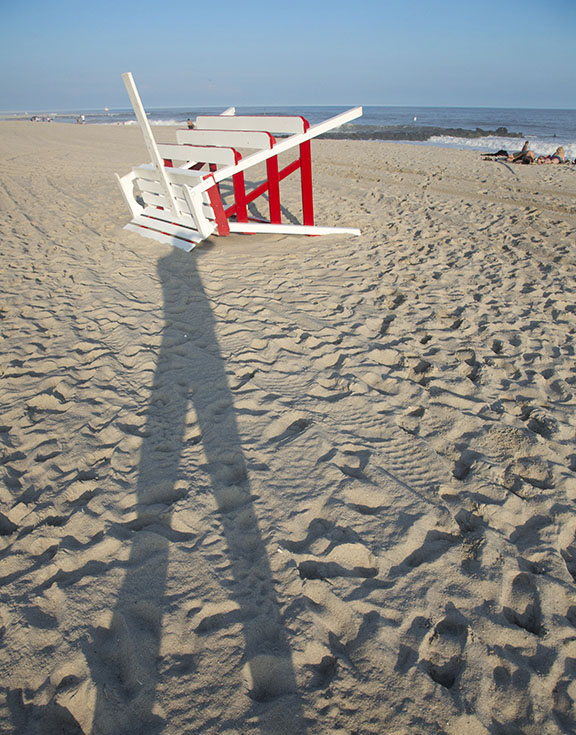 Cape may Lifeguard Stantd
Cape may Lifeguard StantdAnother element of this Cape May beach photo is the patriotic red, white, and blue color theme that this photos puts forward. Don't get me wrong, it's not a mesmerizing photo, but as a camera geek I found it interesting enough to shoot a photo.
For more on using shadows to create interesting images, see my full post on shadow photography.
EXAMPLE 2. Reminiscent of famous photographer Henri Cartier-Bresson and his mastery of candid photography, I captured this "Decisive Moment" below of this women walking down the paved pathway, not too far from the beach in Cape May.
Her path around the puddle left the water surface in the puddle perfectly smooth and great for including the lamp post reflection in the composition.
The point is you will grow as a photographer if, in addition to he typical images, you take the time to try shooting non-typical photos too when you travel to Cape May.
The black and white photo below was taken originally as a color image and then converted to black and white afterwards. It's one of my favorite Cape May images of all time.
I hope this post helped to inspire you! It's a great time to be interested in photography.

Bruce Lovelace is the publisher of TravelingPhotographer.com. Bruce shot portraits full time for over 35 years. Now he shoots more travel photography. Read more about him on the About Page. He also publishes how to articles and camera gear reviews at the Photography Tips and Canon Geek websites.
The Traveling Photographer Location on Google My Business
